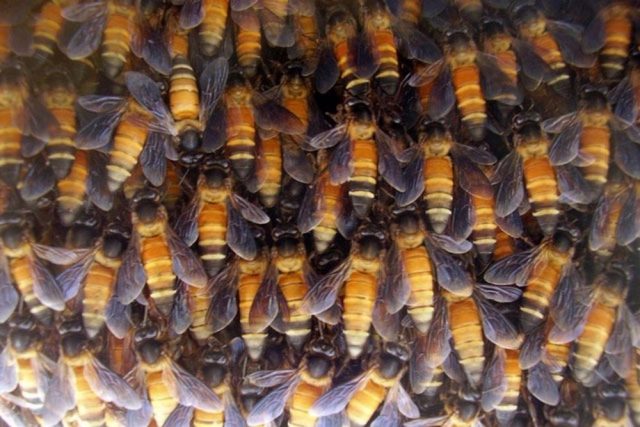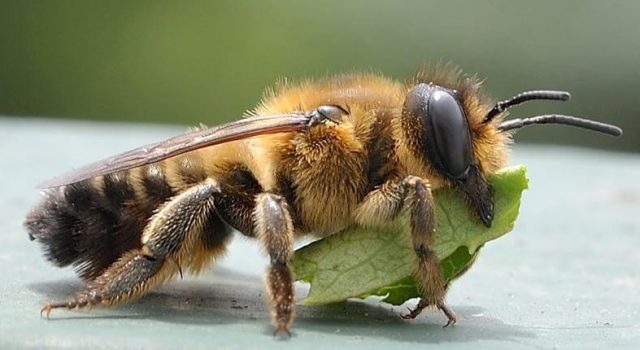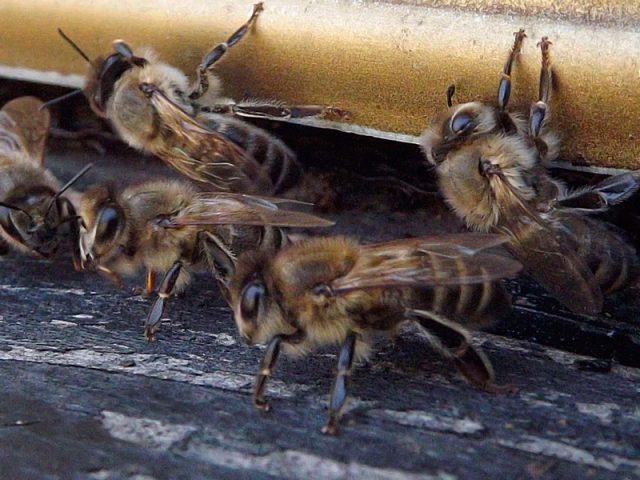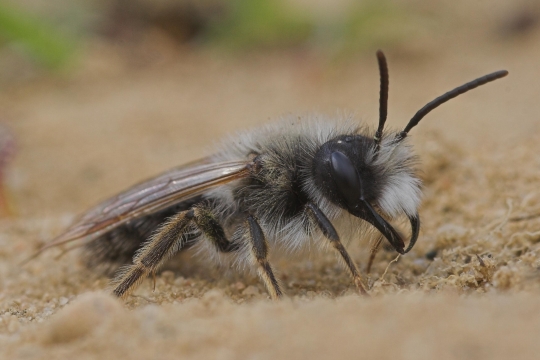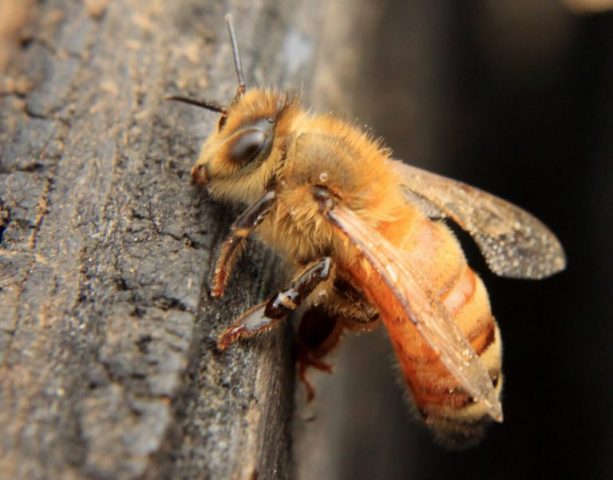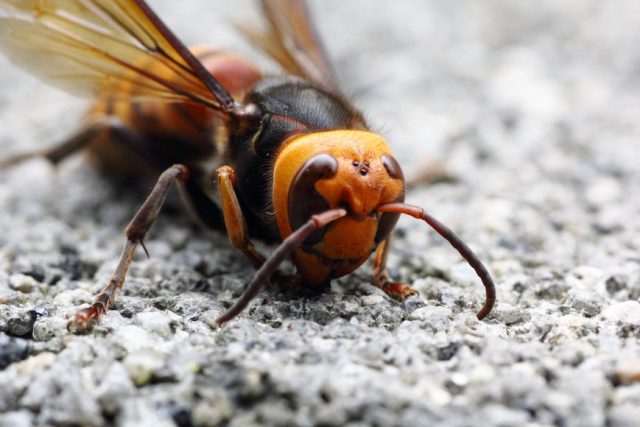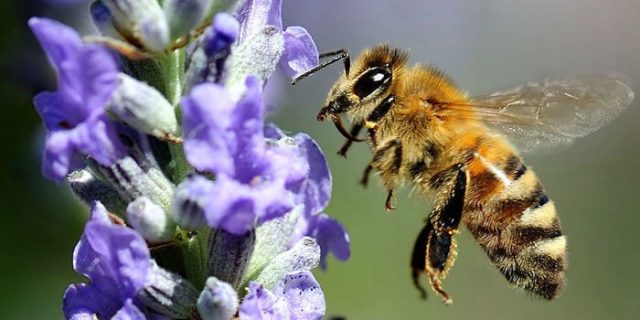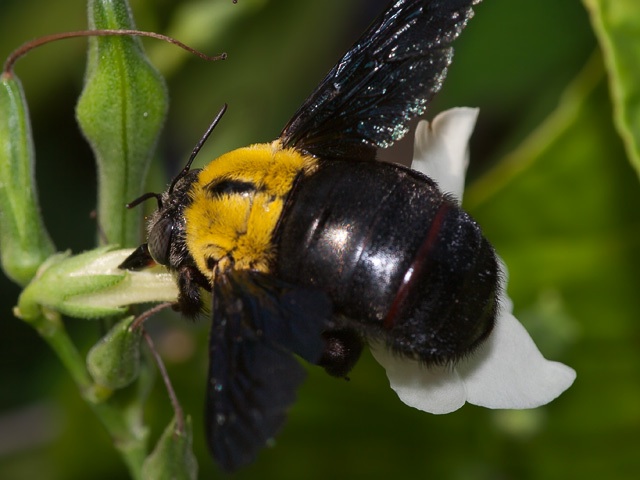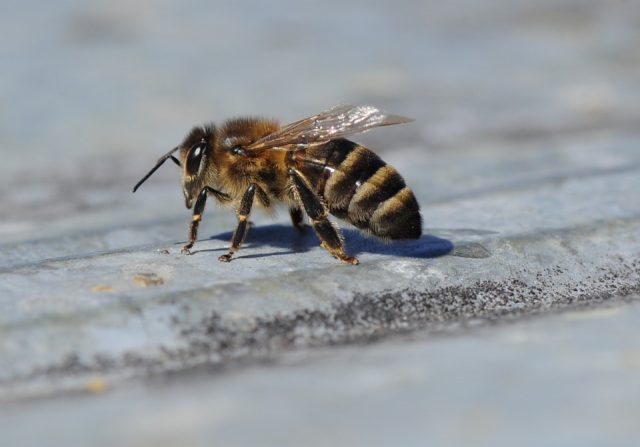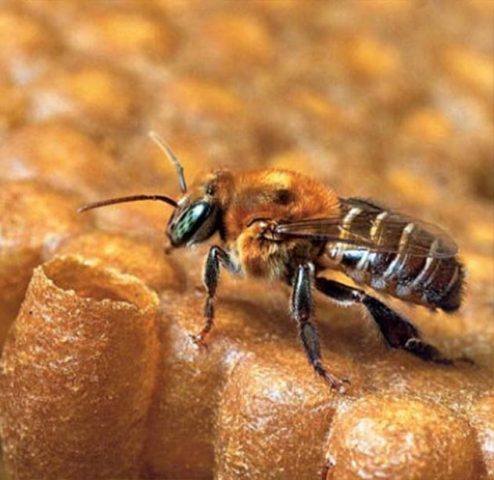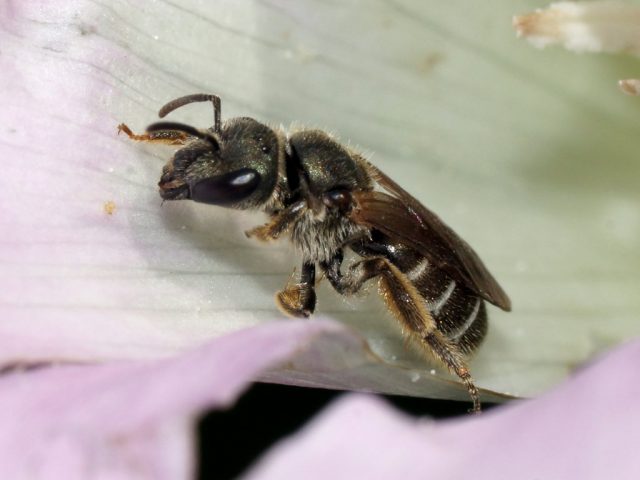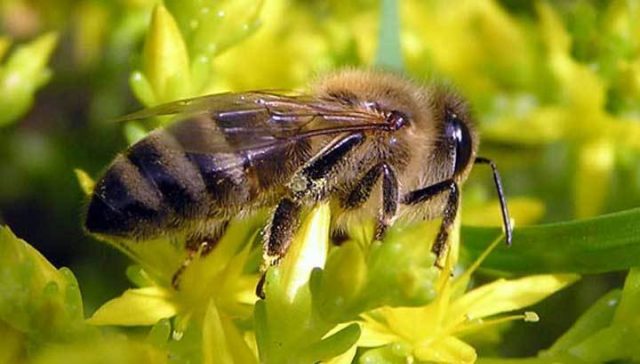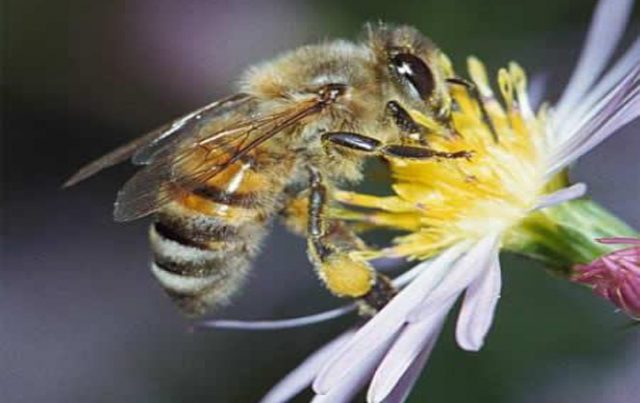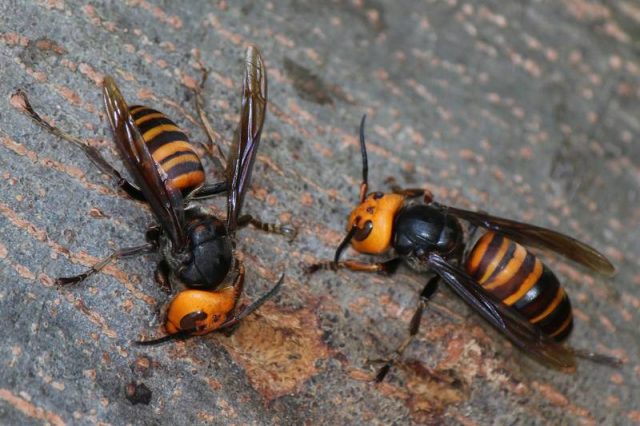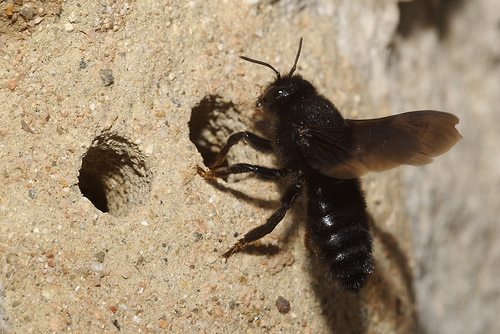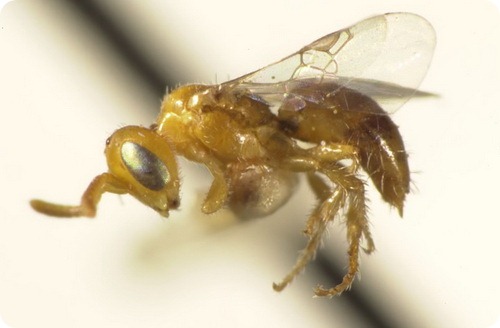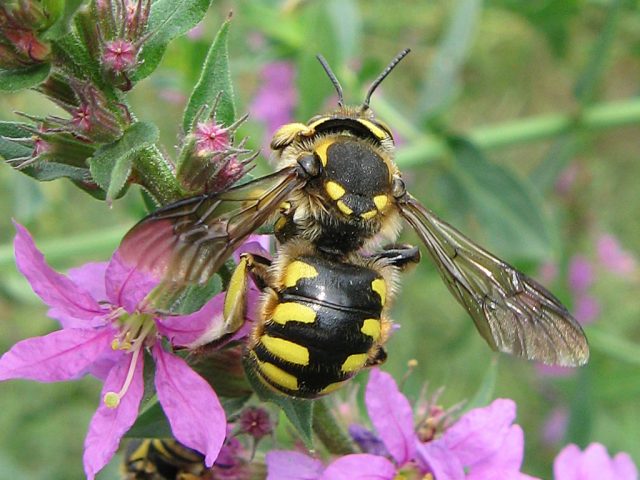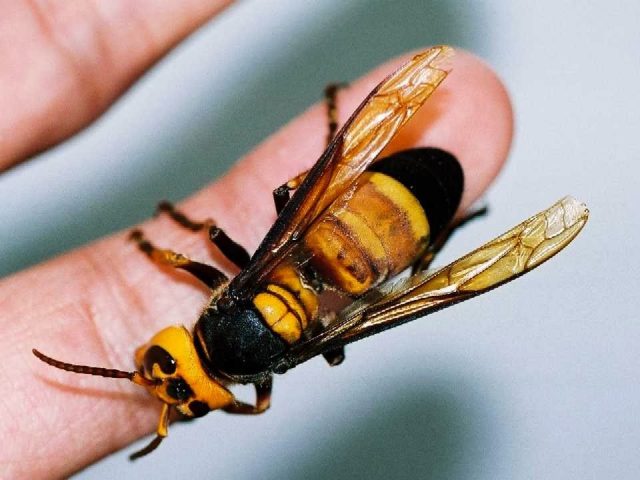Content
- 1 Variety of varieties of bees
- 2 Types and breeds of bees with photos and descriptions
- 2.1 Himalayan
- 2.2 Leaf cutter bee
- 2.3 Bashkir bee
- 2.4 Caucasian breed of bees
- 2.5 Italian
- 2.6 Asian bees
- 2.7 Ukrainian steppe bee
- 2.8 Don bee
- 2.9 Thai bees
- 2.10 Bee abkhazian
- 2.11 Bees melipona
- 2.12 Altai
- 2.13 Siberian bee
- 2.14 Priokskaya breed of bees
- 2.15 Japanese bees
- 2.16 Mason bee
- 2.17 Far Eastern
- 2.18 American
- 2.19 Dwarf bees
- 2.20 Woolly bee
- 2.21 German breed of bees
- 2.22 Cuckoo bee
- 2.23 Giant bee
- 3 The most dangerous bees
- 4 How to determine the breed of bees
- 5 How to choose a breed
- 6 How to change the breed of bees in an apiary
- 7 Conclusion
Before you start creating an apiary, you need to study the types of bees. This helps you choose the best option for yourself, taking into account the characteristics of the behavior of each type of insect. Hymenoptera classification allows predicting the profitability of an apiary.
Variety of varieties of bees
The classification of bees includes two large groups - domesticated and wild insects. Wild bees live in natural conditions. Domestic bees are bred in order to obtain beekeeping products for their further sale. There are about 2000 species of bees. They are divided into 4 large groups:
- melliferous;
- giant;
- dwarf;
- indian.
When choosing a breed of bees for breeding, take into account their predisposition to swarming, habitat and productivity. The most common species of Hymenoptera include:
- gray Caucasian;
- Central Russian;
- buckfast;
- carpathian;
- karnika.
Types and breeds of bees with photos and descriptions
Each species of Hymenoptera requires special breeding conditions. The endurance, efficiency and productivity of bees depend on belonging to a particular species. Some breeds are overly aggressive, others do not pose any danger to humans. External distinctive features also depend on the type of bee. Photos with the names of insect breeds are posted below.
Himalayan
The Himalayan Hymenoptera are distinguished by their bright yellow-black coloration. They live in mountainous areas. The advantages of insects include a peaceful nature and resistance to ticks. The local people of Nepal - the gurungs - are engaged in harvesting. This process is called extreme beekeeping. Over time, it becomes less common due to the lack of security.
Himalayan bee honey has hallucinogenic properties. This is due to the fact that many rhododendrons grow in the mountainous area. Andromedotoxin, which the plant secretes during the flowering period, is considered a powerful poison. Getting into the human body in small quantities, it provokes the appearance of hallucinations. This honey is harvested in the spring. The autumn harvest contains a lot of nutrients, but does not cause hallucinations. Its useful properties include:
- strengthening the immune system;
- restoration of blood pressure;
- normalization of blood glucose levels;
- increased potency.
Leaf cutter bee
By constitution and color, the leaf-cutting bee is considered a close relative of the wasp. Body length ranges from 8 to 16 mm. A distinctive feature of the insect is the presence of a powerful jaw, with the help of which the individual cuts off pieces of leaves. Despite this, the leaf cutter is not classified as a predator. It feeds on flower nectar.
The leaf cutter bee, the photo of which is presented below, is found in latitudes with a temperate climate. It has a short life cycle, during which it manages to pollinate only about 25 plants. The insect is not a pest. But it can spoil the appearance of ornamental plants. It is not recommended to fight the leaf cutter bee. If wild individuals have built a nest near a private garden or vegetable garden, you can simply move it to a safer distance.
Bashkir bee
The Bashkir or Burzyan variety is widespread in European countries. Her body is distinguished by a grayish tint without pronounced yellow stripes. The insect is very sensitive to climatic conditions, so it does not fly out of the hive in the heat and cold. Under favorable conditions, the worker can work for 17 hours. Among the advantages of the variety, wintering is distinguished by a strong family. The disadvantages of this breed include:
- aggressiveness;
- the difficulty of replacing the uterus with a new one;
- swarming tendency.
Caucasian breed of bees
The Caucasian bee tops the list of the most popular breeds. She lives mainly in mountainous areas. The advantages of this type of insect include an agreeable character and hard work, a low tendency to swarm. Only 7% of families have a swarm instinct.
The main advantage is the high productivity of insects. The result is high quality honey. Bees of this breed have a hard time overwintering and have weak immunity. A photo of a Caucasian bee is posted below.
Gray mountain Caucasian bee
For its unique color, the Caucasian bee is called gray. Her body is completely devoid of yellow stripes. This bee is divided into several subspecies:
- Abkhazian;
- valley;
- kakhetian;
- Imeretian;
- Megrelian.
This species of Hymenoptera does not tolerate transportation to places with inappropriate climates. In winter, the likelihood of the death of a Caucasian woman increases. In terms of productivity, the variety is not inferior to the Central Russian breed. She is not at all aggressive, but she will easily defend the interests of her family in the event of a threat of attack.
Italian
The Italian individuals began their distribution from the Apennine Peninsula. In nature, there are gray, golden and three-striped representatives of the species. In beekeeping, breeding of golden subspecies is most often practiced. Their body is larger than that of Central Russian bees. The length of the trunk is 6.4-6.7 mm. Insects are distinguished by their peaceful nature, despite which they effectively protect the hives from intruders. Representatives of the breed have a pronounced tendency to steal honey.
In the harsh Russian climate, it is difficult for the Italian breed of bees to winter. Therefore, in the winter, the family needs special care. In this case, a large supply of feed will be required. The most common diseases of the Italian bee include acarapidosis and nosematosis. The tendency to swarming in this species is average. Transport has a negative impact on insects.
Asian bees
A special population of honey bees has been bred in Asian countries. They differ significantly from the hymenoptera common in Europe. There are over 9000 species of Asian bees. The giant Apis dorsata laboriosa is considered a striking representative. It is distinguished by its large size and dark belly, on which white stripes flaunt. They also have an extra pair of eyes located between the main ones. The breed builds its hives on sheer cliffs. The features of Asian individuals include a painful bite.
Ukrainian steppe bee
Representatives of the Ukrainian steppe breed are resistant to sudden changes in temperature, due to which they tolerate wintering well. They are distinguished by their cleanliness. In the hive of such bees, there are never wax crumbs and debris. The bee colony is at its peak throughout its entire life cycle, regardless of external conditions.The risk of developing ascopherosis, nosematosis and brood diseases is minimal. The main advantages of the Ukrainian steppe bee include:
- excellent fertility of the uterus;
- low susceptibility to swarming;
- frost resistance;
- disease resistance.
The disadvantages of the breed include selective pollination. Bees prefer plants with a high sugar content. About 10% of bee families are prone to swarming.
Don bee
The Don breed is distinguished by its high productivity and fertility. Her body is covered with brown stripes. During the reproductive period, the uterus is capable of laying about 3000 eggs per day. The family is considered to be prone to active swarming. Most often, workers collect nectar from yellow melilot, acacia and oregano.
Thai bees
Thai bees are distinguished by their peculiar appearance. The abdomen has a dark shade, there are no stripes on it. Compared to other types of bees, the wings of the Thai breed are darker. The insect has a calm disposition and high efficiency. Beekeeping products have a mild and delicate taste.
Bee abkhazian
The Abkhazian is common in the mountainous areas of the Caucasus. Due to the location of the hives on the slopes of the steep cliffs, it is called the stone bee. It is considered the least problematic in breeding. A distinctive feature of the breed is its long trunk. Due to the unique properties of bee honey, this species began to be cultivated in Western Europe and the USA. The productivity of workers is due to early departure from the hive.
Bees melipona
Melipons have an interesting feature - the complete absence of a sting. The protective function is performed by odorous liquids. Also, at the moment of danger, the bee bites the attacker with its mandibles. Unlike other species of Hymenoptera, Meliponians do not have a clear division of labor in the family. It is not accepted for them to take care of the growing brood. The Melipon dwellings look more like bumblebee nests.
The most delicious honey is produced by melipones living in the Mexican Yucatan Peninsula. If earlier they were widespread, then recently the number of this species has significantly decreased.
Altai
The variety of Altai bees, the photo of which is given below, is considered very rare. Honey made in Altai is very popular due to its valuable properties. The experience of experienced beekeepers shows that the breed is extremely careful in using its feed reserves and is highly productive. Altai hymenoptera are spiteful, but rarely get infected with nosematosis.
Siberian bee
The most frost-resistant bees live in Siberia. They are appreciated for their high performance and resistance to various diseases. They are distinguished by their large size and strong immunity. The Siberian bee is considered malevolent but prolific. Breeders plan on the basis of this species to develop a new breed that would be able to produce beekeeping products throughout the year.
Priokskaya breed of bees
The Priokskaya bee is a relative of the representatives of the gray mountain Caucasian species of insects. She is gray in color with characteristic yellow stripes. The proboscis length is 6-7 mm. Egg-laying peaks in the first half of June. The positive characteristics of these bees include:
- the brood is 15% higher than the average family;
- increased resistance of the breed to nosematosis;
- minimal tendency to swarm;
- early development in the spring.
The disadvantage of the breed is its attachment to a particular locality. Representatives of this species successfully exist in the Ryazan and Tula regions. Breeding in other regions negatively affects their productivity.
Japanese bees
The Japanese bee resembles a hornet in its appearance.A distinctive feature of the insect is its impressive size. The body length reaches 4 cm, and the wingspan is 6 cm. Giant hornets look frightening. Their bite is deadly and is considered very painful.
The chest and abdomen of the insect are distinguished by a bright orange color. The back of the body is lined with brown stripes. The dwelling of this breed resembles a wasp's nest. Hornets feed their larvae exclusively with meat. For breeding Japanese bees are not used. Moreover, they pose a threat to the worker bee hive.
Mason bee
The mason got her name from the use of small grains of sand and stones in the construction of her home. Outwardly, such an individual differs from other Hymenoptera in a blue-green abdomen with a metallic sheen. The bricklayer is considered a productive pollinator. She flies out of the hive in search of nectar, even in inclement weather.
Far Eastern
The Far Eastern breed is widespread in the Khabarovsk and Primorsky Territories. The color of the breed ranges from gray to gray-yellow shades. The length of the trunk is 6.5 mm. This species is considered to be friendly and productive. Representatives of this breed prefer to collect nectar from linden.
The advantages of individuals of this type include easy wintering tolerance and disease resistance. The main disadvantages are:
- long-term construction of honeycombs;
- high swarming tendency;
- insufficient wax performance.
American
The American variety is considered a hybrid, which spread to Africa and then to Brazil. She is distinguished by high endurance and aggressiveness. Because of the frequent attacks of the swarm on animals, they were nicknamed killer bees. The breed reproduces 2 times more honey than other types of bees.
Dwarf bees
The dwarf breed is one of the smallest species of bees. Her body length is 2 mm. Dwarf insects mainly pollinate flowers. Unlike representatives of other breeds, the dwarf bee works alone. The breed builds its nest in sandy soil. In beekeeping, this type is practically not used.
Woolly bee
Sherstobit is considered a large individual. Her body length is 13 mm. There is a black spot on the back of the head, and a yellow spot on the front. A unique feature of the species lies in the unusual approach to housing construction. As a material for building a nest, the breed uses various reeds, shells, etc. Wooltobit builds honeycombs from plant fluff.
German breed of bees
German bees are also called black bees. They are distinguished by the presence of a thick layer of yellow fluff. The advantages of the breed include a calm disposition and strong immunity. Workers are tolerant of low temperatures, but do not tolerate smoke. But in beekeeping, they are used extremely rarely due to their susceptibility to foulbrood and high aggressiveness.
Cuckoo bee
The cuckoo bee lives in Australia and southeastern Asia. It is distinguished by a specific black and blue color. In beekeeping, they are not used, since the breed is slow and inoperative. Insects of this species do not build their nests. They throw the larvae into the nests of the Amegilla breed.
Giant bee
Insects of the giant breed live in the wild. They build their hives in trees or in rock crevices. The body of an adult individual reaches 16-18 mm in length. The color of the insect is yellowish. It is extremely difficult to domesticate such a species, since it reacts aggressively to any interference in its work. It is advisable to avoid meeting such an individual for safety reasons.
The most dangerous bees
Some species of Hymenoptera are fatal to humans. This is due to the high toxicity of their venom. In addition, some breeds are capable of stinging for no reason, several times.The best defense is to avoid the places where they accumulate. The most dangerous types are:
- Africanized killer bee;
- tiger bee.
How to determine the breed of bees
Outwardly, all bee breeds are similar to each other. But an experienced beekeeper will easily distinguish one species from another. The following parameters are used as a guide:
- average size of an individual;
- climatic living conditions;
- color;
- the degree of productivity;
- swarming tendency;
- aggressiveness.
First of all, attention is paid to the appearance of the Hymenoptera. The structure of the pattern and color in each case is different. Some breeds are characterized by wing color and body size. Insect behavior is considered an indirect classification criterion.
How to distinguish what breed of a queen bee
The queen bee is the leader of the bee family. She is responsible for reproductive functions. Its distinctive feature is its large body size and low mobility. The queen flies out of the hive only for the purpose of mating with drones or during the swarming period. In each breed of Hymenoptera, the uterus looks different. Her color will be the same as that of other members of the family.
How to choose a breed
There are several factors to consider when choosing a breed for breeding. The quantity and quality of the crop depends on the correct choice. Experts recommend paying attention to the following criteria:
- performance level;
- the volumes of the processed wax;
- immune protection;
- resistance to climatic conditions;
- the nature of the bees.
First of all, beekeepers try to assess the performance and resistance of Hymenoptera to disease. Based on these data, the principle of caring for the family will be selected. Their character is also important. The degree of complexity of work in the apiary depends on their aggressiveness. In some cases, they turn a blind eye to aggressiveness if the variety is highly efficient.
How to change the breed of bees in an apiary
The process of replacing the breed in the apiary is not accompanied by any particular difficulties. Since the uterus is engaged in the offspring, only its replacement will be enough. By mating with local drones, it will reproduce a cross between the two breeds. But to reproduce the next generation of drones, the DNA of local representatives of Hymenoptera is not required, since drones emerge from unfertilized larvae. Therefore, a complete breed change will occur approximately 40 days after the new uterus is added. The first representatives of the new species will appear in the hive within 20 days.
In the first year of active breeding, new queens will be hatched, which can be planted in other hives. When replanting, it should be borne in mind that by the fall, new queens should be present in the bee dwelling. The old breed influences the new one exclusively in a positive way. The gradual change from one species to another accelerates the adaptability of the family to new conditions. The correct breed change will help reduce the cost of caring for the bee family and increase its productivity.
Conclusion
The types of bees need to be studied if it is planned to select the most suitable breed for breeding. The profitability of the apiary depends on the correct choice. Wrong selection leads to the inevitable death of the bee family.
